Subfamily Phasianinae Scientific name Crossoptilon harmani Higher classification Crossoptilon | Genus Crossoptilon Phylum Chordata Rank Species | |
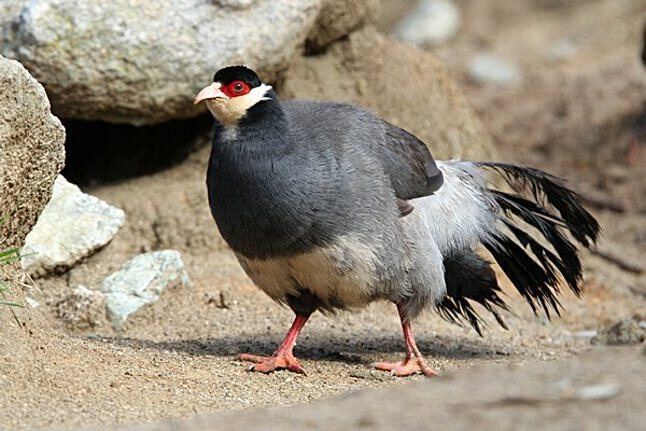 | ||
Similar Crossoptilon, White eared pheasant, Bird, Blue eared pheasant, Brown eared pheasant | ||
Tibetan eared pheasant qu shui cai na nature reserve lhasa tibet china 1sept16 ph3 3414
The Tibetan eared pheasant (Crossoptilon harmani), also called Elwes' eared pheasant, is a species of bird in the family Phasianidae. It is found in southeast Tibet and adjacent northern India. Usually 3,000 and 5,000 m (9,800 and 16,400 ft) elevation, but has been seen down to 2,280 m (7,500 ft) in winter.
Contents
- Tibetan eared pheasant qu shui cai na nature reserve lhasa tibet china 1sept16 ph3 3414
- Description
- Distribution and habitat
- Ecology
- Status
- References
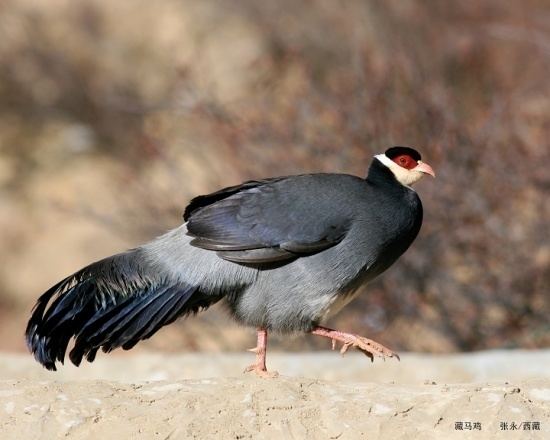
Its natural habitats are boreal and temperate forests. Seen in bushy and grassy clearings, rhododendron thickets, and tall dense scrub in valleys, this bird is threatened by habitat destruction and hunting. They form monogamous pair bonds in the spring. The eggs are laid from May to July, and incubated by the female.
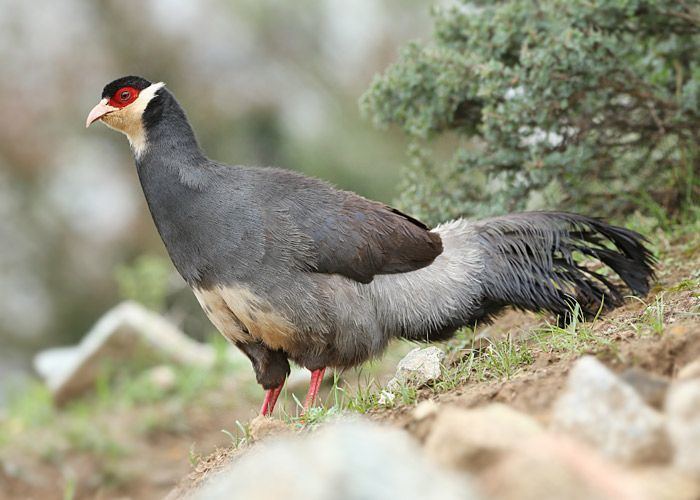
Description

The Tibetan eared pheasant shares many characteristics, such as the short ears and the droopy tail, with the white eared pheasant (Crossoptilon crossoptilon), as well as having similar calls and hybridising with it in the Salween Valley, so the two may be conspecific. The Tibetan eared pheasant grows to a length of between 75 and 85 cm (30 and 33 in), with females being slightly smaller than males. The sexes are similar. The beak is reddish-brown, the irises yellowish-orange and the bare facial skin is red, as are the legs. The head is topped with a crown of black, dense short feathers, on either side of which are short, non-projecting ear-tufts. The rest of the head and nape, and a thin collar are white. The rest of the body, wings and tail are bluish-grey, the mantle, neck and breast being of a darker shade whereas the lower back, rump, upper tail coverts and belly are paler whitish-grey. The wings are blackish-brown and the tail bluish-black.
Distribution and habitat
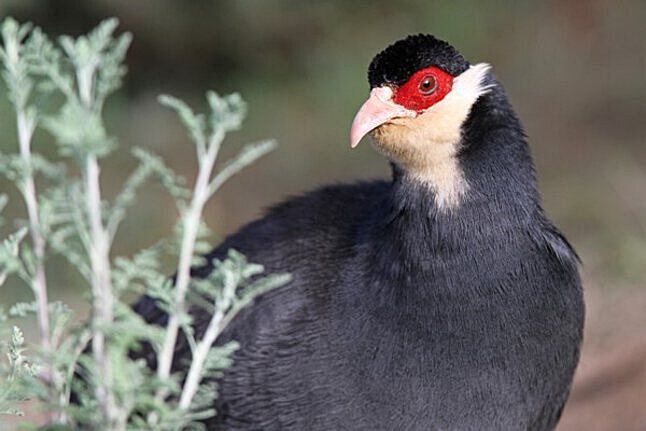
The range is restricted to Tibet, northern India and northern Bhutan. Its typical habitat is dense scrubby areas in river valleys, grassy hillsides and the verges of both coniferous and deciduous woodland. Although sometimes found at elevations as low as 2,400 m (7,900 ft), it usually occurs between about 3,000 and 5,000 m (9,800 and 16,400 ft).
Ecology
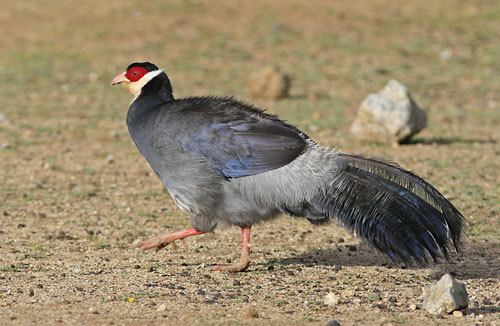
This pheasant usually forms groups of up to ten individuals. It feeds on the ground, foraging through the plant debris and grasses near woodland edges and among the rhododendron and juniper scrub. In areas where it is hunted it may be elusive, retreating into the undergrowth or flying off downhill when scared, but where unmolested it can be quite bold. The birds are believed to be monogamous, with breeding taking place between May and July. One nest was discovered under a fallen tree trunk; it was made from bark and pulp with a mossy lining. The female seems to be solely responsible for incubating the eggs, but both sexes have been observed feeding the chicks.
Status
C. harmani is rated by the International Union for Conservation of Nature as being a "near-threatened species". This is because its natural habitat is being cleared and in many areas the birds are hunted. Another factor in the possible decline of the population is a reduction in the number of suitable places for roosting.
